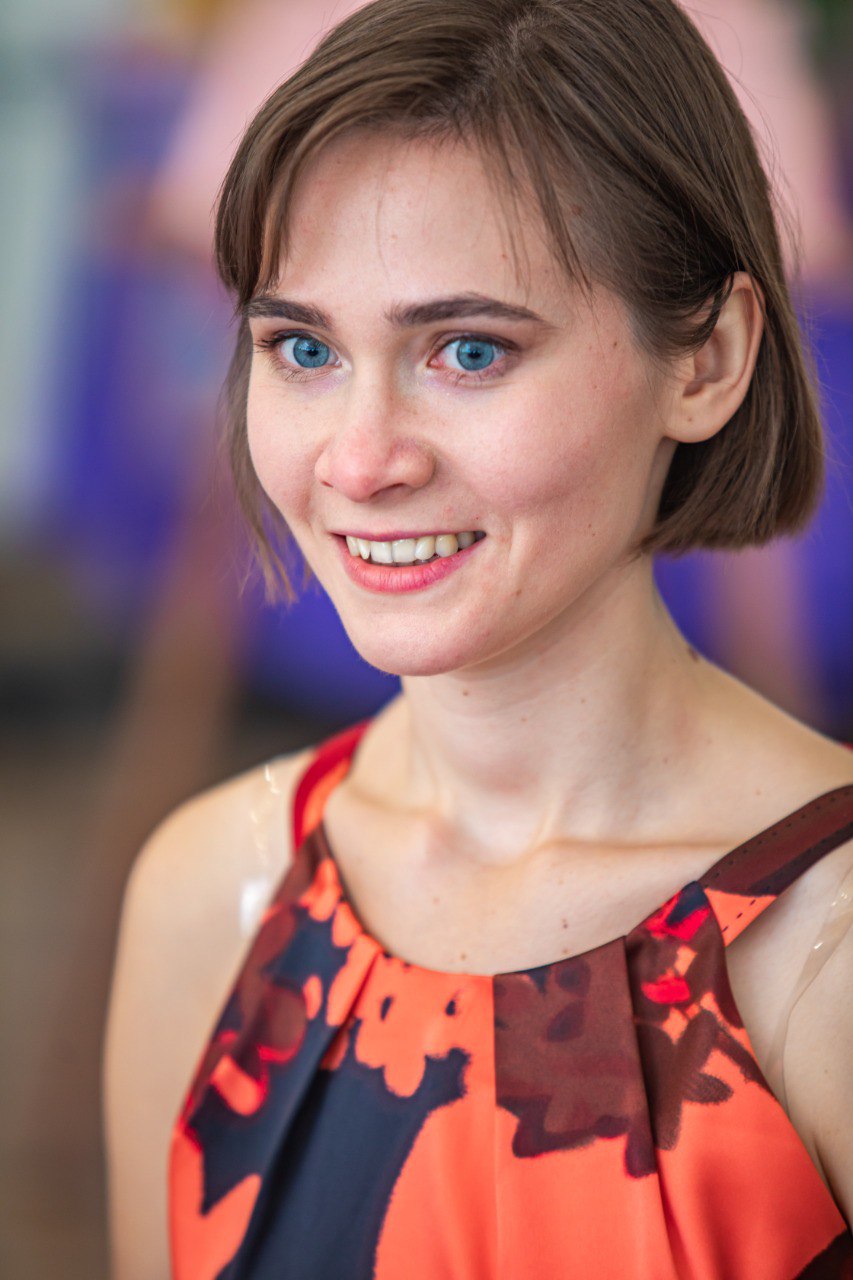Hello! I'm Mariia
A research assistant in elementary particle and high energy physics at SPbPU.
Download Curriculum Vitae List of main publications Research and teaching statement Proof of Degree
A research assistant in elementary particle and high energy physics at SPbPU.
Download Curriculum Vitae List of main publications Research and teaching statement Proof of Degree
I'm Mariia Mitrankova, researcher in elementary particle and high energy physics.
I have studied physics of atomic nuclei and elementary particles at St. Petersburg Polytechnic University (SPbPU) under the bachelor, master, and PhD programs.
During my study, I joined the PHENIX collaboration at RHIC collider.
On April 20, 2023 I sucssesfully defended my PhD thesis, devoted to \(\phi\) meson production in \(p\rm{+Al}\), \(p\rm{+Au}\), \(d\rm{+Au}\), and \(^{3}\rm{He+Au}\) collisions at \(\sqrt{s_{_{NN}}}\rm{=200~GeV}\), measured by PHENIX.
I also participate in light hadron \( ( \pi^{\pm}, K^{\pm}, K^{0*}(895), p(\bar{p}) ) \) production studies in various collisions systems at PHENIX.
Additionally, I have an experience in lecturing on physics of atomic nuclei for the final year undergraduate students.
I am interested in new analyzing methods, such as maching learning and grid computing. Together with graduate students, we are implementing these methods to predict observables, based on PYTHIA calculations and have prepared paper devoted to this work.
Aside from elementary particles physics, my research interest is also high temperature plasma. From 2017 to 2020 I was working in Ioffe Institute (St. Petersburg, Russia) in the Globus-M(2) research group.
My maiden name is Mariia Larionova. In 2020, I married Iurii Mitrankov and changed my last name to Mitrankova. All our scientific career my husband and I work side by side and share all research interests with each other.
2019 - April 2023
Ph. D. - Physics of atomic nuclei and elementary particles, high energy physics
Peter the Great St.Petersburg Polytechnic University (SPbPU), Russia
PhD title: The \(\phi\) meson production in \(p\rm{+Al}\), \(p\rm{+Au}\), \(d\rm{+Au}\), and \(^{3}\rm{He+Au}\) collisions at \(\sqrt{s_{_{NN}}}\rm{=200~GeV}\).
I received a diploma upon graduation from PhD program: Qualification - Researcher. Teacher researcher.
2017 - 2019
M. Phys. - Physics of nucleus and elementary particles
Peter the Great St.Petersburg Polytechnic University (SPbPU), Russia
Passed with 4.00/4.00 CGPA.
2013 - 2017
B. Phys. - Physics
Peter the Great St.Petersburg Polytechnic University (SPbPU), Russia
Passed with 3.54/4.00 CGPA
Jan 2019 - ongoing
Researcher
Peter the Great St.Petersburg Polytechnic University (SPbPU), Russia
Measurements of \(\phi\)-meson production in \(p\rm{+Al}\), \(p\rm{+Au}\), \(d\rm{+Au}\), and \(^{3}\rm{He+Au}\) collisions at \(\sqrt{s_{_{NN}}}\rm{=200~ GeV}\).
Participating in light hadron \( ( \pi^{\pm}, K^{\pm}, K^{0*}(895), p(\bar{p}) ) \) production studies in various collisions systems at PHENIX.
2017 - 2019
Researcher
Ioffe Institute, St.Petersburg, Russia. High Temperature Plasma Physics Lab.
CXRS measurements of ion temperature profile in NBI shots of the Globus-M and Globus-M2 spherical
tokamak.
Design of the optical light collection system for the CXRS-diagnostic, modified for Globus-M2 spherical
tokamak.
2020 - 2021
Engineer
Ioffe Institute, St.Petersburg, Russia. Scientific and technical projects support department.
Creation of the database of Ioffe Institute previous and current fundings and contracts.
Quality and Management plan documentation for the designing ToF detector for FAIR experiment at GSI.
Jan 2022 - ongoing
Teaching experience
Peter the Great St.Petersburg Polytechnic University (SPbPU), Russia
Lectures and practicies on physics of atomic nuclei.
7th semester